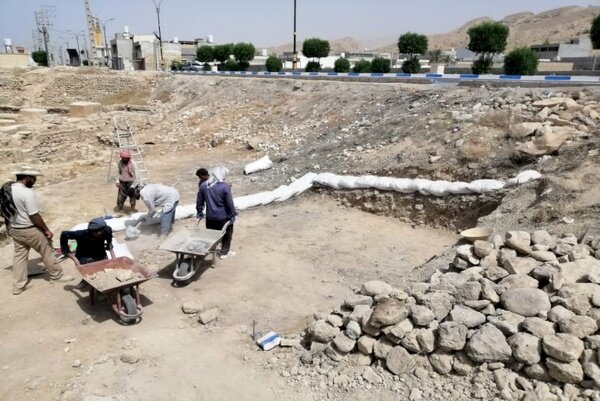Excavations to shed new light on Sassanid maritime in ancient Siraf

TEHRAN – Archaeologists have commenced a field survey to shed new light on the maritime heritage of the Sassanids across the ancient Siraf located on the north shore of the Persian Gulf.
“These excavations will be carried out for 45 days to recognize the evidence of maritime trade and the state of the Sassanids in the historical port of Siraf,” a local official said on Sunday.
The majority of excavations will be carried out in the historical core of the port city near its Jameh mosque and ruined fortresses, Seyyed Mehdi Azarian was quoted as saying by ILNA.
The official voiced hope that ongoing research will pave the way for making an international open-air museum in Siraf.
“I hope we can take steps to introduce and get to know this ancient port as much as possible and provide the infrastructure to turn it into an international site museum.”
“This goal will be achieved through continuous, and of course, annual research and field excavations,” he said.
Siraf was Iran’s most important port from the Sassanid period to the 4th century AH. It bears plentiful evidence of Persian mastership and genius in seafaring, international relations, and interaction with other near and far cultures and civilizations.
Between 1966 and 1973, the British Institute of Persian Studies conducted seven seasons of excavation and survey at Siraf, which was a major city on the Iranian shore of the Persian Gulf that played a leading role in the network of maritime trade that supplied Western Asia with the products of India, the Far East, and Eastern Africa between 800 CE and 1050.
The ancient port had a population of about 300,000 during the early Islamic era and this fact shows that it was a large city. However, today, just about 7,000 people live in Siraf in a small area.
In many ways, Iran under the Sassanian rule witnessed tremendous achievements of Persian civilization. Experts say that the art and architecture of the nation experienced a general renaissance during Sassanid rule.
In the Sassanid era, crafts such as metalwork and gem-engraving grew highly sophisticated, as scholarship was encouraged by the state; many works from both the East and West were translated into Pahlavi, the official language of the Sassanians.
In fact, the legendary wealth of the Sassanian court is fully confirmed by the existence of more than one hundred examples of bowls or plates of precious metal known at present. One of the finest examples is the silver plate with partial gilding in the Metropolitan Museum of Art in New York. The dynasty was destroyed by Arab invaders during a span from 637 to 651.
AFM

Leave a Comment